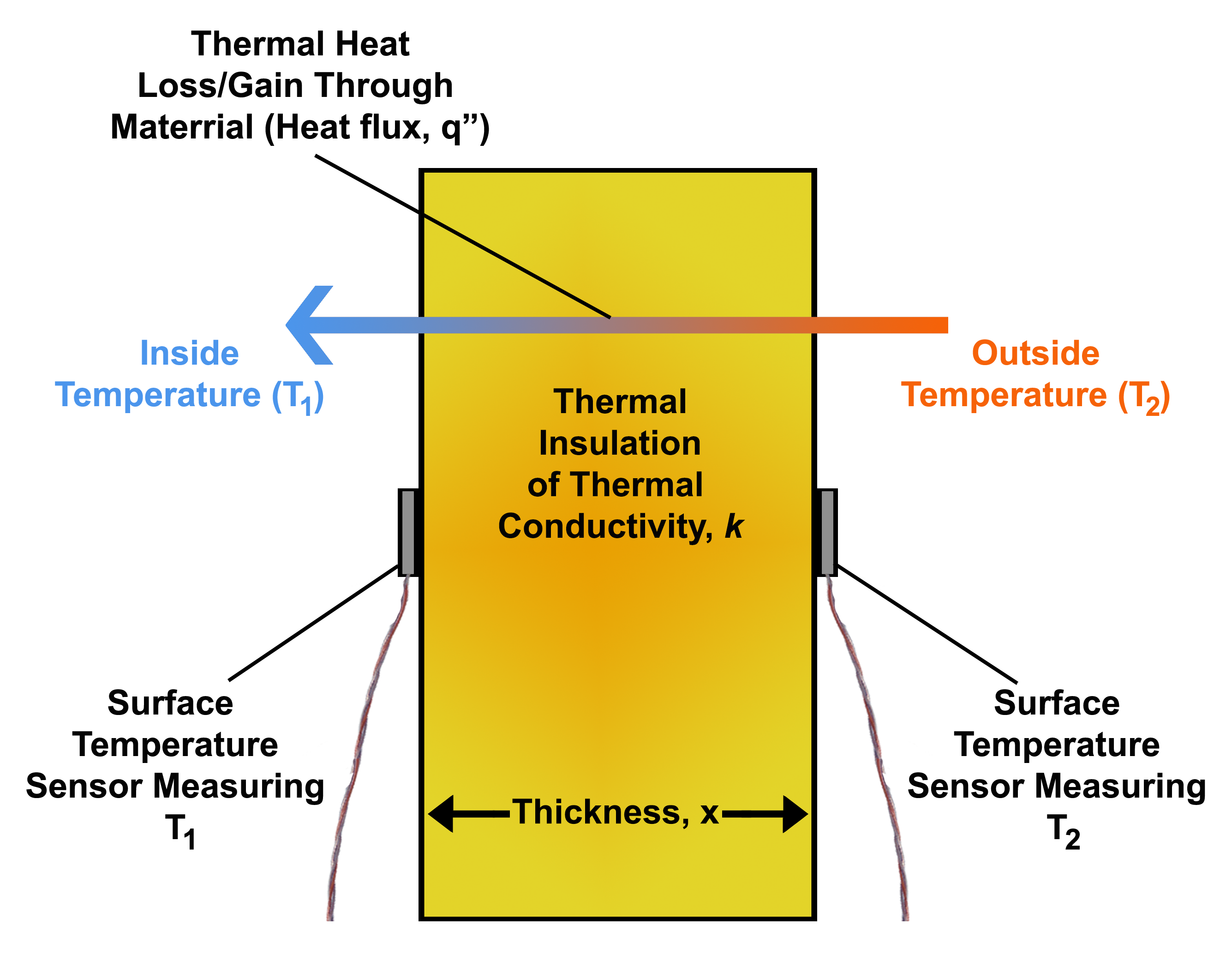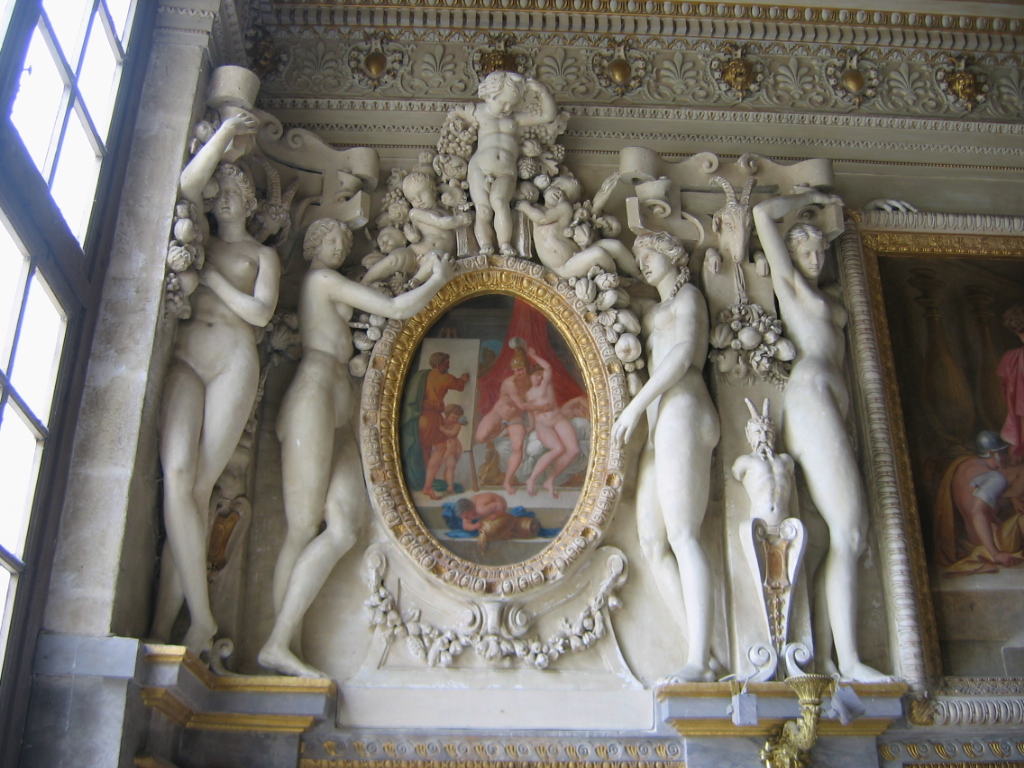|
Thermal Transmittance
Thermal transmittance is the rate of transfer of heat through matter. The thermal transmittance of a material (such as insulation or concrete) or an assembly (such as a wall or window) is expressed as a R-value (insulation)#U-factor.2FU-value, U-value. The R-value (insulation), thermal insulance of a structure is the reciprocal of its thermal transmittance. U-value Although the concept of U-value (or U-factor) is universal, U-values can be expressed in different units. In most countries, U-value is expressed in SI units, as watts per square metre-kelvin: :W/(m2⋅K) In the United States, U-value is expressed as British thermal units (Btu) per hour-square feet-degrees Fahrenheit: :Btu/(h⋅ft2⋅°F) Within this article, U-values are expressed in SI unless otherwise noted. To convert from SI to US customary values, divide by 5.678. Well-insulated parts of a building have a low thermal transmittance whereas poorly insulated parts of a building have a high thermal transmittance. ... [...More Info...] [...Related Items...] OR: [Wikipedia] [Google] [Baidu] |
R-value (insulation)
The ''R''-value is a measure of how well a two-dimensional barrier, such as a layer of insulation, a window or a complete wall or ceiling, resists the conductive flow of heat, in the context of construction. R-value is the temperature difference per unit of heat flux needed to sustain one unit of heat flux between the warmer surface and colder surface of a barrier under steady-state conditions. The measure is therefore equally relevant for lowering energy bills for heating in the winter, for cooling in the summer, and for general comfort. The ''R-value'' is the building industry term for thermal resistance "per unit area." It is sometimes denoted RSI-value if the SI units are used. An R-value can be given for a material (e.g., for polyethylene foam), or for an assembly of materials (e.g., a wall or a window). In the case of materials, it is often expressed in terms of R-value per metre. R-values are additive for layers of materials, and the higher the R-value the better th ... [...More Info...] [...Related Items...] OR: [Wikipedia] [Google] [Baidu] |
Cavity Wall
A cavity wall is a type of wall that has an airspace between the outer face and the inner, usually structural, construction. The skins typically are masonry, such as brick or cinder block. Masonry is an absorbent material that can retain rainwater or condensation. One function of the cavity is to drain water through weep holes at the base of the wall system or above windows. The weep holes provide a drainage path through the cavity that allows accumulated water an outlet to the exterior of the structure. Usually, weep holes are created by leaving out mortar at the vertical joints between bricks at regular intervals, by inserting tubes, or by inserting an absorbent wicking material into the joint. Weep holes are placed wherever a cavity is interrupted by a horizontal element, such as door or window lintels, masonry bearing angles, or slabs. A cavity wall with masonry as both inner and outer vertical elements is more commonly referred to as a double wythe masonry wall. History ... [...More Info...] [...Related Items...] OR: [Wikipedia] [Google] [Baidu] |
Thermographic Camera
Infrared thermography (IRT), thermal video or thermal imaging, is a process where a Thermographic camera, thermal camera captures and creates an image of an object by using infrared radiation emitted from the object in a process, which are examples of infrared imaging science. Thermographic cameras usually detect electromagnetic radiation, radiation in the long-infrared range of the electromagnetic spectrum (roughly 9,000–14,000 nanometers or 9–14 μm) and produce images of that radiation, called thermograms. Since infrared radiation is emitted by all objects with a temperature above absolute zero according to the black body Planck's law of black-body radiation, radiation law, thermography makes it possible to see one's environment with or without optical spectrum, visible illumination. The amount of radiation emitted by an object increases with temperature; therefore, thermography allows one to see variations in temperature. When viewed through a thermal imaging camera, war ... [...More Info...] [...Related Items...] OR: [Wikipedia] [Google] [Baidu] |
Heat Flux
In physics and engineering, heat flux or thermal flux, sometimes also referred to as heat flux density, heat-flow density or heat-flow rate intensity, is a flow of energy per unit area per unit time (physics), time. Its SI units are watts per square metre (W/m2). It has both a direction and a magnitude, and so it is a Vector (geometric), vector quantity. To define the heat flux at a certain point in space, one takes the Limiting case (mathematics), limiting case where the size of the surface becomes infinitesimally small. Heat flux is often denoted \vec_\mathrm, the subscript specifying ''heat'' flux, as opposed to ''Mass flux, mass'' or Transport phenomena, ''momentum'' flux. Heat conduction#Fourier's law, Fourier's law is an important application of these concepts. Fourier's law For most solids in usual conditions, heat is transported mainly by thermal conduction, conduction and the heat flux is adequately described by Fourier's law. Fourier's law in one dimension \phi ... [...More Info...] [...Related Items...] OR: [Wikipedia] [Google] [Baidu] |
Heat Flux Sensor
] A heat flux sensor is a transducer that generates an electrical signal proportional to the total heat transfer, heat rate applied to the surface of the sensor. The measured heat rate is divided by the surface area of the sensor to determine the heat flux. The heat flux can have different origins; in principle convective, Thermal radiation, radiative as well as Thermal conduction, conductive heat can be measured. Heat flux sensors are known under different names, such as heat flux transducers, heat flux gauges, or heat flux plates. Some instruments are actually single-purpose heat flux sensors, like pyranometers for solar radiation measurement. Other heat flux sensors include Gardon gauges (also known as a circular-foil gauge), thin-film thermopiles, and Schmidt-Boelter gauges. Usage Heat flux sensors are used for a variety of applications. Common applications are studies of building envelope thermal resistance, studies of the effect of fire and flames or laser power measurem ... [...More Info...] [...Related Items...] OR: [Wikipedia] [Google] [Baidu] |
Plaster
Plaster is a building material used for the protective or decorative coating of walls and ceilings and for moulding and casting decorative elements. In English, "plaster" usually means a material used for the interiors of buildings, while "render" commonly refers to external applications. The term stucco refers to plasterwork that is worked in some way to produce relief decoration, rather than flat surfaces. The most common types of plaster mainly contain either gypsum, lime, or cement,Franz Wirsching "Calcium Sulfate" in Ullmann's Encyclopedia of Industrial Chemistry, 2012 Wiley-VCH, Weinheim. but all work in a similar way. The plaster is manufactured as a dry powder and is mixed with water to form a stiff but workable paste immediately before it is applied to the surface. The reaction with water liberates heat through crystallization and the hydrated plaster then hardens. Plaster can be relatively easily worked with metal tools and sandpaper and can be moulded, either on ... [...More Info...] [...Related Items...] OR: [Wikipedia] [Google] [Baidu] |
Mortar (masonry)
Mortar is a workable paste which hardens to bind building blocks such as stones, bricks, and concrete masonry units, to fill and seal the irregular gaps between them, spread the weight of them evenly, and sometimes to add decorative colours or patterns to masonry walls. In its broadest sense, mortar includes pitch, asphalt, and soft clay, as those used between bricks, as well as cement mortar. The word "mortar" comes from the Old French word ''mortier'', "builder's mortar, plaster; bowl for mixing." (13c.). Cement mortar becomes hard when it cures, resulting in a rigid aggregate (composite) , aggregate structure; however, the mortar functions as a weaker component than the building blocks and serves as the sacrificial element in the masonry, because mortar is easier and less expensive to repair than the building blocks. Bricklayers typically make mortars using a mixture of sand, a binder, and water. The most common binder since the early 20th century is Portland cement, but ... [...More Info...] [...Related Items...] OR: [Wikipedia] [Google] [Baidu] |
Concrete
Concrete is a composite material composed of aggregate bound together with a fluid cement that cures to a solid over time. It is the second-most-used substance (after water), the most–widely used building material, and the most-manufactured material in the world. When aggregate is mixed with dry Portland cement and water, the mixture forms a fluid slurry that can be poured and molded into shape. The cement reacts with the water through a process called hydration, which hardens it after several hours to form a solid matrix that binds the materials together into a durable stone-like material with various uses. This time allows concrete to not only be cast in forms, but also to have a variety of tooled processes performed. The hydration process is exothermic, which means that ambient temperature plays a significant role in how long it takes concrete to set. Often, additives (such as pozzolans or superplasticizers) are included in the mixture to improve the physical prop ... [...More Info...] [...Related Items...] OR: [Wikipedia] [Google] [Baidu] |
Mortar Joint
In masonry, mortar joints are the spaces between bricks, concrete blocks, or glass blocks, that are filled with mortar or grout. If the surface of the masonry remains unplastered, the joints contribute significantly to the appearance of the masonry.Joint. In: Mortar joints can be made in a series of different fashions, but the most common ones are raked, grapevine, extruded, concave, V, struck, flush, weathered and beaded. In order to produce a mortar joint, the mason must use one of several types of jointers (slickers), rakes, or beaders. These tools are run through the grout in between the building material before the grout is solid and create the desired outcome the mason seeks. Repointing Although good-quality bricks may outlast civilizations, the mortar that bonds them can crack and crumble after a number of years. Water penetration is the greatest degrader of mortar, and different mortar joints allow for varying degrees of water-resistance. For maintenance, degraded m ... [...More Info...] [...Related Items...] OR: [Wikipedia] [Google] [Baidu] |
Multiplicative Inverse
In mathematics, a multiplicative inverse or reciprocal for a number ''x'', denoted by 1/''x'' or ''x''−1, is a number which when Multiplication, multiplied by ''x'' yields the multiplicative identity, 1. The multiplicative inverse of a rational number, fraction ''a''/''b'' is ''b''/''a''. For the multiplicative inverse of a real number, divide 1 by the number. For example, the reciprocal of 5 is one fifth (1/5 or 0.2), and the reciprocal of 0.25 is 1 divided by 0.25, or 4. The reciprocal function, the Function (mathematics), function ''f''(''x'') that maps ''x'' to 1/''x'', is one of the simplest examples of a function which is its own inverse (an Involution (mathematics), involution). Multiplying by a number is the same as Division (mathematics), dividing by its reciprocal and vice versa. For example, multiplication by 4/5 (or 0.8) will give the same result as division by 5/4 (or 1.25). Therefore, multiplication by a number followed by multiplication by its reciprocal yie ... [...More Info...] [...Related Items...] OR: [Wikipedia] [Google] [Baidu] |








